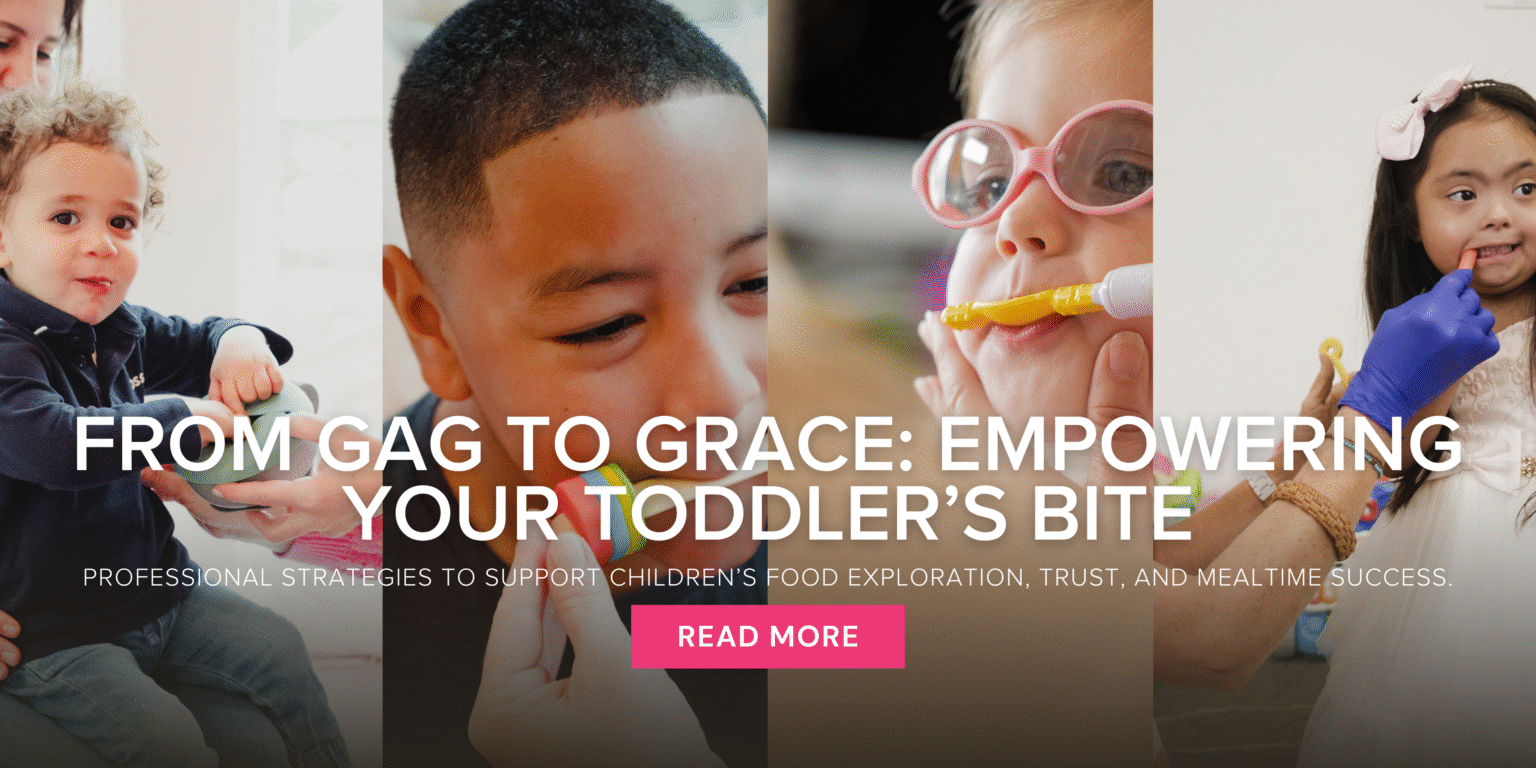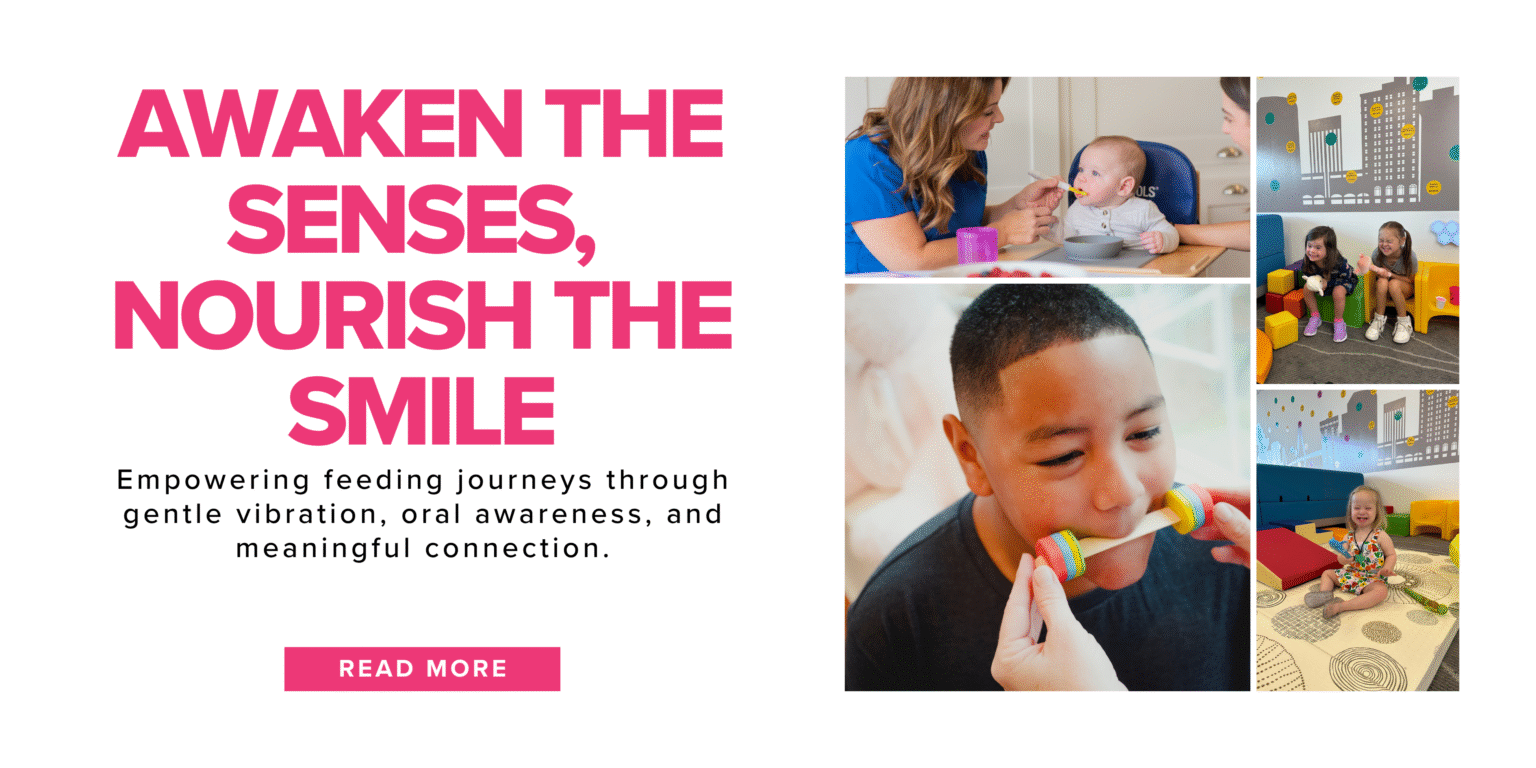IS OPEN MOUTH POSTURE/MOUTH BREATHING EVER OK? NO WAY!
As Richard F. Liao, DDS states, “your mouth is the source of your energy and the gateway to your whole-body health.”
We have all seen it – and once you see it, you can’t “un-see” it! It’s mouth breathing or open mouth posture. As speech professionals, are we more aware as we are learning more about this – or are there more people with open mouth posture?
MOUTH BREATHING IS SERIOUS STUFF AND CAN LEAD TO LONG-TERM ISSUES:
- High Blood pressure and other cardiovascular problems
- Poor growth
- Hyperactivity/Inattention (movement to stay awake or meltdowns, unregulated)
- Behavioral Difficulties
- Anxiety, Depression
- Increased risk of neurocognitive issues
- Metabolic disease
WHAT ARE SOME OF THE RED FLAGS CAREGIVERS CAN OBSERVE:
- Audible breathing, snoring, gasping
- Tossing, turning, sleeping in odd positions
- Sweating
- Teeth grinding
- Bedwetting
- Night terrors
- Waking frequently
- Tired or wired throughout the day
- Concerns with behavior, emotional regulation, anxiety
- Concerns with learning, school performance
- Poor concentration and attention
WHAT MIGHT BE THE CAUSES?
- Medical
- Allergies
- Enlarged Tonsils/Adenoids
- Enlarged Turbinates
- Structural
- Tethered Oral Tissue (lips, tongue)
- Obstruction
- Deviated Septum
- Recessed Jaw
- Nasal Growth
“Small” Nose
- Musculature (weakness)
- Jaw instability
- Lack of tongue retraction
- Lip weakness
- Eating Soft Foods
- Habitual
- Thumbsucking
- Sippy Cup Use
- This is all I know
- Low Tone
WHERE DO YOU START? DO NOT UNDERESTIMATE OBSERVATION!
- What should I be observing?
- Body Posture – head forward, pelvis titled, one shoulder higher than the other
- Pooling in the veins
- Lips are chapped, cracked, open
- Dimpling in the mentalis
- Small teeth due to grinding
- Gummy smile
- Jaw misalignment
- Tongue not resting correctly inside the mouth
- What if client can breathe through their nose but still has open-mouth posture?
- Mirror test – place small mirror under client’s nose – does it “fog up”?
- Listen to speech – hyponasal speech might indicate obstruction or blockage
- Can they close lips between talking? Do they close their lips when watching TV, reading, playing games?
- Are lips closed when they are eating?
- Duration of breathing through nose?
GETTING YOUR CLIENT FROM MOUTH BREATHER TO NOSE BREATHER
- Nasal Breathing Activities:
- Add a tactile cue (nasal flute)
- mirror test
- sniffing like a bunny
- olfactory cue – breathe essential oils or stickers
- Alternate nasal breathing
- Acupressure (if nostril(s) are blocked):
- Place tongue to palate and push tongue into palate
- Put index finger between eyebrows and apply light to medium pressure
- Hold for 20-30 seconds
- Diaphragmatic Breathing
- Have client lie flat on a couch or the floor
- Place a book on client’s stomach for sensory input (therapists or client’s hands can be placed on book to stabilize book and add more sensory input if needed)
- Clients lips/mouth remain closed
- Prompt client to inhale a deep breath THROUGH NOSE
- Prompt client to fill belly with air in increments: “small belly” “big belly”
- Prompt client to exhale THROUGH NOSE
- Oral Motor and Myo Activities:
- Lip Closure:
- Lip Seal: have client close lips gently – add a tactile cue (tongue depressor or folder paper) if necessary – and maintain lip seal for a determined number of seconds. This will increase muscle memory and strengthen lip muscles.
- TalkTools® Straw Drinking Hierarchy™
- TalkTools® Horn Blowing Hierarchy
- Make kisses
- Smack lips together
- Make humming sounds
- Jaw Instability:
- TalkTools® Bite Block Exercises
- Chewing/Eating Observation
- TalkTools® Chew Tube Hierarchy
- Gum Chewing Exercises
- TalkTools® Slow Feed Activity
- TalkTools® Jaw Exerciser
- Tongue placement:
- Tongue lateralization observation during eating – solid cube placement
- Tongue-tip elevation exercises: elevate tongue tip to “spot” on top palate behind front teeth (may need to use a tool to elevate the tongue unless client can do this on their own)
- Tongue clicks
- Gum chewing Exercises
- TalkTools Slow Feed activity
- Tongue extension/retraction exercises
- Lollipop squeezes and rolls
- Lip Closure:
- Swallowing Activities:
- Lip closure activities listed above
- Chin tuck against resistance
- Dry swallow (no additional liquids).
- Body Posture Awareness:
- encourage correct seated body posture with trunk upright, forearms and knees parallel to the floor, hands at rest on laps or tray, feet firmly on floor
- Chin tuck exercises can help with forward head posture
- Consistent Practice and Reinforcement:
- Encourage regular practice of exercises and techniques both during therapy sessions and in daily activities.
- Consistency and repetition are key to reinforcing new habits and achieving lasting improvements in oral posture.
ADDITIONAL TIPS:
- Always conduct a thorough assessment of the WHOLE CHILD, as well as their specific needs and circumstances to create an effective treatment plan
- Do not assess and treat in a bubble! Collaboration with other professionals is essential in determining the best treatment plan, as well as if and when to refer!
Written by: Monica Purdy, MA, CCC-SLP, COM®



